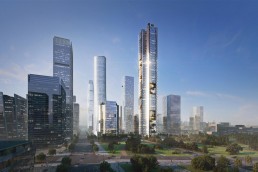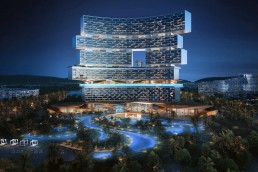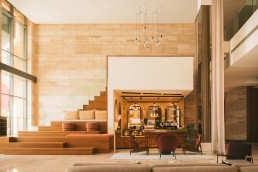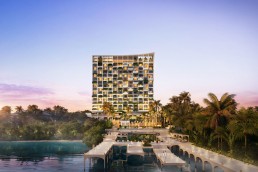Büro Ole Scheeren wins design competition with octagonal mixed-use skyscraper
Büro Ole Scheeren has won an international design competition to build Nanjing Nexus, a mixed-use 350m-tall octagonal skyscraper set to become the Nanjing Jiangbei New Financial Centre in China.
The project’s architectural form is a departure from the typical rectangular tower by trimming its shaft into an octagon and carving each facet into a concave bay, harnessing the energy of the context, and embracing the surrounding city.
The eight bays are horizontally split and vertically shifted to create offsets and form a skyline, with large urban windows opening up to accommodate diverse programmes and communicate the activity of the building to the city.
Abundant vegetation further transforms the urban windows into vertical gardens, a contemporary interpretation of the garden culture and pavilions of the Jiangsu province. The integration of specific typologies of landscape in the tower serves sustainability strategies on multiple levels: ecological, social but also historical.
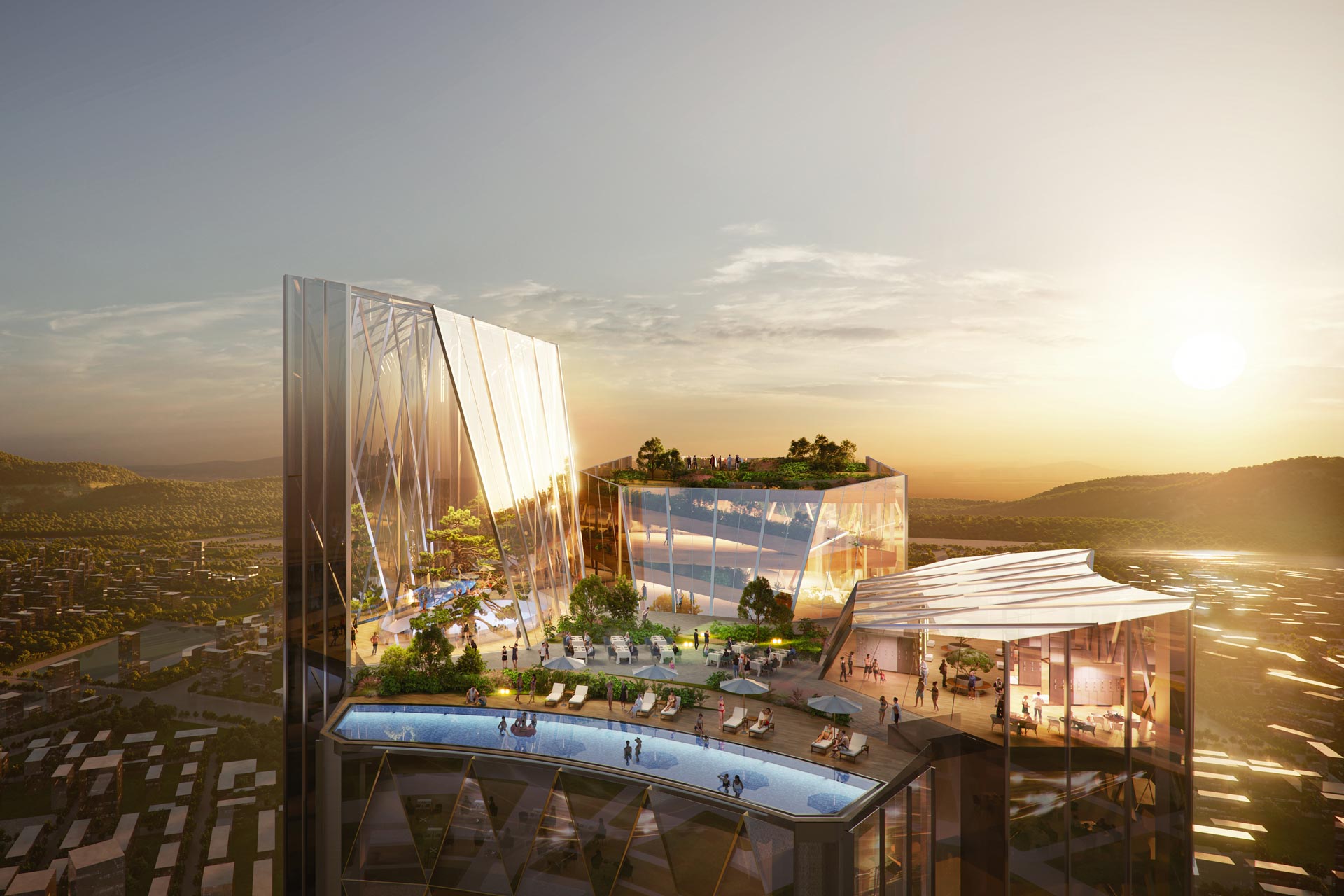
Nanjing Nexus’ octagonal form allows highly efficient floor plans and clearly structured programming. At the top of the tower, a hotel exploits multi-directional views and offers a spectacular roof terrace with pool deck, restaurant, and gardens – a public space 350 meters above the city.
The concave surfaces of the three-dimensionally textured facade are designed to optimise the building’s solar performance and reduce structural wind loads, while reflecting light in reminiscence of the sparkles and ripples of the Yangtze River’s waves.
Nanjing Nexus presents an elegantly simple, economical, and adaptable design that can be further translated to multiple scales and functions. It’s immediate neighbour, a 100m-tall satellite tower, is conceived as an adaptation of the octagonal figure to create a small-scale version of the super-tall tower. Together, they form a new landmark in Jiangbei’s future district of Nanjing.
“Nanjing Nexus is a building that explores the question how contemporary architecture can absorb, and in fact amplify, historical context and meaning by fusing the qualities of the past with the requirements of a future-oriented workspace within the verticality of a super-tall office tower,” explains Ole Scheeren, principal of Buro-OS. “The convergence of past and present is not merely about formal gestures – it is about creating actual experiences and spaces with specific emotive and experiential qualities.”
Related Posts
21 February 2022
Design Hotels welcomes four new members
28 July 2021
